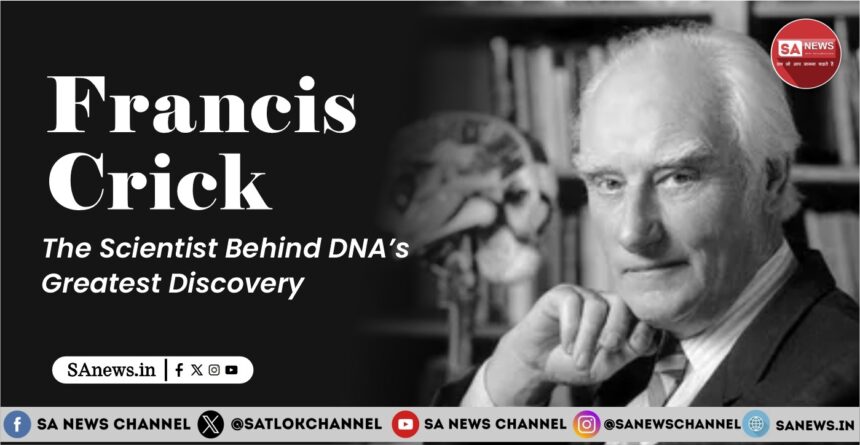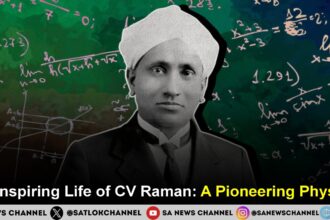Francis Crick was a Nobel Prize-winning British molecular biologist who had played a monumental role in shaping modern science. He, with James Watson, made one of the major breakthroughs in science: the discovery of the structure of DNA. Such a finding revolutionized genetics and changed very important approaches in the ways life has been perceived. His unrelenting curiosity, keen intellect, and audacious scientific approach helped unravel mysteries that continue to resonate loudly in medicine, genetics, and biotechnology today. This biography profiles Crick’s early life, career milestones, pathbreaking discoveries, and peerless legacy.
- Highlights
- Early Life and Education of Francis Crick
- Crick’s Work in World War II
- Transition to Biology
- The Cambridge Years: Meeting James Watson
- Discovery of the DNA Structure
- The Role of Rosalind Franklin
- Francis Crick: The Nobel Prize winner
- Central Dogma of Molecular Biology
- Later Scientific Contributions by Francis Crick
- Crick’s Personality and Work Ethic
- Legacy and Impact of Francis Crick
- Why Science Alone Cannot Decode the Purpose of Life
- Frequently Asked Questions about Francis Crick
Highlights
- Co-discovered the double-helix structure of DNA.
- 1962 Nobel Prize in Physiology or Medicine
- Made major contributions to molecular biology, genetics, and neuroscience.
- He believed deeply in interdisciplinary research.
- His work changed the future of medicine and biological sciences.
Early Life and Education of Francis Crick
Francis Harry Compton Crick was born on June 8, 1916, in Northampton, England, into a middle-class family and was naturally disposed toward science. His family encouraged curiosity, and as a young boy, Crick spent hours experimenting, reading, and exploring the physical sciences.
He took up physics at University College London, a subject which would help him tease out the secrets of nature. However, World War II disrupted his academic momentum. Despite such interruptions, with more experience the analytical mind of Crick grew even sharper.
Crick’s Work in World War II
In the war years, Crick served at the Admiralty Research Laboratory at Hastings, where he designed magnetic and acoustic mines. During this period, Crick fortified his problem-solving abilities and was introduced to the most advanced levels of scientific creativity. He later confessed that doing military research could not quench his intellectual appetite; he wanted to investigate more profound questions about life.
Transition to Biology
After the war, the emphasis of Crick would shift from physics to biology-a turn that would change the future of science. He went to the University of Cambridge to study molecular biology, fascinated by the basic question: What is life’s secret?
It was not an easy transition; it meant Crick had to learn new scientific disciplines from scratch, such as organic chemistry and genetics. Still, his determination pushed him forward.
The Cambridge Years: Meeting James Watson
At the Cavendish Laboratory in 1951, Crick met James Watson, a young American biologist. Both shared a burning curiosity about DNA, the molecule believed to carry genetic information. Their personalities were different yet complementary: Watson was bold and intuitive, while Crick was analytical and philosophical.
Their collaboration would yield one of the most significant scientific milestones ever.
Discovery of the DNA Structure
In 1953, Crick and Watson proposed a double-helix model of DNA. They conceptualized how genetic information was stored and replicated. The two strands within their structure twisted around each other were held together by base pairs: adenine, thymine, cytosine, and guanine.
This finding had addressed a number of long-standing questions:
- How do organisms inherit traits?
- How does genetic information get copied?
- What is the molecular basis of life?
The double helix provided the basis for modern genetics, molecular biology, and biotechnology.
The Role of Rosalind Franklin
Although the discovery of DNA is largely credited to Crick and Watson, it was Rosalind Franklin’s X-ray diffraction images that were important. Her famous Photo 51 showed crucial structural details. Later in life, Crick himself said her contribution was pivotal, and that in science, nobody is ever alone.
Francis Crick: The Nobel Prize winner
In 1962, the Nobel Prize in Physiology or Medicine was awarded to Francis Crick, James Watson, and Maurice Wilkins for their monumental work in discovering the molecular structure of DNA and its meaning in understanding genetics.
Crick’s receipt of the Nobel Prize was not only a personal honor but a historical milestone for all of biology.
Central Dogma of Molecular Biology
Crick continued to do work on biological mechanisms following the DNA discovery. He proposed the Central Dogma of Molecular Biology, which describes the flow of genetic information:
DNA → RNA → Protein
This would become a cornerstone of modern biological science, standing in classrooms the world over.
Later Scientific Contributions by Francis Crick
Crick didn’t stop with genetics. He changed course and moved into neuroscience, particularly studying consciousness. He worked on finding out how the brain deals with awareness and perception at California’s Salk Institute.
Also Read: Che Guevara Revisited: A Critical and Comprehensive Biography for the Modern Reader
His interdisciplinary mentality encouraged scores of scientists to think out of the box.
Crick’s Personality and Work Ethic
Crick had a big personality and quick wit and never balked at asking impertinent questions. He assumed nothing, calling for open dialogue when others were silent. Prestige never fueled Crick’s work ethic; curiosity did.
Legacy and Impact of Francis Crick
Francis Crick died on July 28, 2004, but his legacy in the field of biology, medicine, and genetics lives on to the present day. His discoveries paved the way for:
- Genetic engineering
- DNA sequencing
- Biotechnology
- Personalized medicine
- Forensic science
Every time a DNA is studied, sequenced, or manipulated, something of Crick’s lives on.
Why Science Alone Cannot Decode the Purpose of Life
Francis Crick’s relentless search for the fundamental blueprint of life transformed modern science. Yet even after decoding DNA, one truth remains-material knowledge alone cannot decode the purpose of life. Today, despite scientific progress, humanity still grapples with questions of suffering, destiny, and the true goal of existence. Sant Rampal Ji Maharaj explains in his spiritual discourses that the ultimate “code of life” lies not in DNA but in understanding the Supreme God Kabir, who created all souls and the universes.
Just as Crick pursued hidden molecular structures, seekers today can pursue the hidden spiritual structure of salvation through authentic scripture-based devotion. This realization inspires readers to go beyond scientific curiosity and explore the deeper spiritual science that grants eternal peace and liberation.
Frequently Asked Questions about Francis Crick
1. Who was Francis Crick?
He was a British molecular biologist credited with co-discovering the double-helix structure of DNA.
2. What is Francis Crick best known for?
He is best remembered for the discovery of DNA’s structure with James Watson back in 1953.
3. Did Francis Crick win the Nobel Prize?
Yes, he won the Nobel Prize in Physiology or Medicine in 1962.
4. What did Crick contribute to molecular biology?
He proposed the Central Dogma of Molecular Biology; this explained the flow of genetic information from DNA to proteins.
5. Where did Crick spend his later years?
He worked at the Salk Institute in California, focusing on neuroscience and consciousness.









